Macrophage STING signaling promotes fibrosis in benign airway stenosis via an IL6-STAT3 pathway
- PMID: 39753529
- PMCID: PMC11698984
- DOI: 10.1038/s41467-024-55170-5
Macrophage STING signaling promotes fibrosis in benign airway stenosis via an IL6-STAT3 pathway
Abstract
Acute and chronic inflammation are important pathologies of benign airway stenosis (BAS) fibrosis, which is a frequent complication of critically ill patients. cGAS-STING signalling has an important role in inflammation and fibrosis, yet the function of STING in BAS remains unclear. Here we demonstrate using scRNA sequencing that cGAS‒STING signalling is involved in BAS, which is accompanied by increased dsDNA, expression and activation of STING. STING inhibition or deficiency effectively alleviates tracheal fibrosis of BAS mice by decreasing both acute and chronic inflammation. Macrophage depletion also effectively ameliorates BAS. Mechanistically, dsDNA from damaged epithelial cells activates the cGAS-STING pathway of macrophages and induces IL-6 to activate STAT3 and promote fibrosis. In summary, the present results suggest that cGAS-STING signalling induces acute inflammation and amplifies the chronic inflammation and tracheal fibrosis associated with benign airway stenosis, highlighting the mechanism and potential drug target of BAS.
© 2025. The Author(s).
Conflict of interest statement
Competing interests: The authors declare no competing interests.
Figures
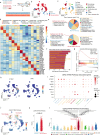
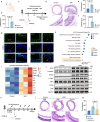
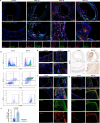
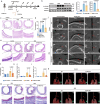
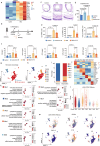
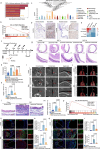
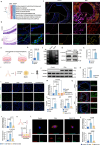

Similar articles
-
Mitochondrial DNA release via the mitochondrial permeability transition pore activates the cGAS-STING pathway, exacerbating inflammation in acute Kawasaki disease.Cell Commun Signal. 2024 Jun 13;22(1):328. doi: 10.1186/s12964-024-01677-9. Cell Commun Signal. 2024. PMID: 38872145 Free PMC article.
-
Targeting STING in dendritic cells alleviates psoriatic inflammation by suppressing IL-17A production.Cell Mol Immunol. 2024 Jul;21(7):738-751. doi: 10.1038/s41423-024-01160-y. Epub 2024 May 28. Cell Mol Immunol. 2024. PMID: 38806624 Free PMC article.
-
The cGAS-STING pathway promotes acute ischemia-induced neutropoiesis and neutrophil priming in the bone marrow.Basic Res Cardiol. 2025 Aug;120(4):677-705. doi: 10.1007/s00395-025-01111-2. Epub 2025 May 7. Basic Res Cardiol. 2025. PMID: 40332608
-
Photoaging: UV radiation-induced cGAS-STING signaling promotes the aging process in skin by remodeling the immune network.Biogerontology. 2025 Jun 20;26(4):123. doi: 10.1007/s10522-025-10268-1. Biogerontology. 2025. PMID: 40542276 Free PMC article. Review.
-
Crosstalk between oxidative stress, mitochondrial dysfunction, chromosome instability, and the activation of the cGAS-STING/IFN pathway in systemic sclerosis.Ageing Res Rev. 2025 Aug;110:102812. doi: 10.1016/j.arr.2025.102812. Epub 2025 Jun 23. Ageing Res Rev. 2025. PMID: 40562314 Review.
Cited by
-
Oral exposure to LaNiO3 regulates the immune system, modulates gut flora, and induces intestinal autophagy in mice.Nanoscale Adv. 2025 Jun 23;7(16):5007-5018. doi: 10.1039/d5na00089k. eCollection 2025 Aug 5. Nanoscale Adv. 2025. PMID: 40657622 Free PMC article.
References
-
- Oberg, C. L., Holden, V. K. & Channick, C. L. Benign Central Airway Obstruction. Semin Respir. Crit. Care Med.39, 731–746 (2018). - PubMed
-
- Guibert, N., Saka, H. & Dutau, H. Airway stenting: Technological advancements and its role in interventional pulmonology. Respirology25, 953–962 (2020). - PubMed
-
- Chen, N. et al. Inhibitory effect of mitomycin C on proliferation of primary cultured fibroblasts from human airway granulation tissues. Respiration85, 500–504 (2013). - PubMed
Publication types
MeSH terms
Substances
Associated data
- SRA/SRR31229501
- SRA/SRR31229502
- SRA/SRR31229503
- SRA/SRR31229504
- SRA/SRR31229505
- SRA/SRR31229506
- SRA/SRR31229507
- SRA/SRR30898181
- SRA/SRR30898182
- SRA/SRR30898183
- SRA/SRR30898184
- SRA/SRR30898185
- SRA/SRR30898186
- SRA/SRR30898187
- SRA/SRR30898188
- SRA/SRR30898189
- SRA/SRR30831591
- SRA/SRR30831592
- SRA/SRR30831593
- SRA/SRR30831594
- SRA/SRR30831595
- SRA/SRR30831596
- SRA/SRR30831597
- SRA/SRR30831598
- SRA/SRR30831590
Grants and funding
LinkOut - more resources
Full Text Sources
Molecular Biology Databases
Research Materials
Miscellaneous

